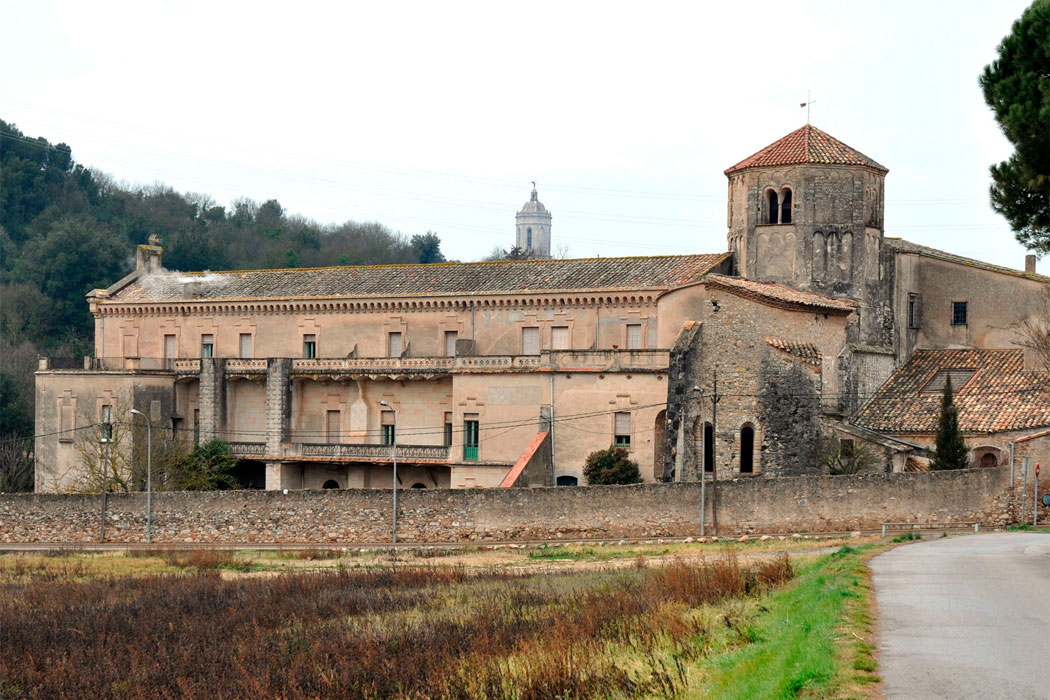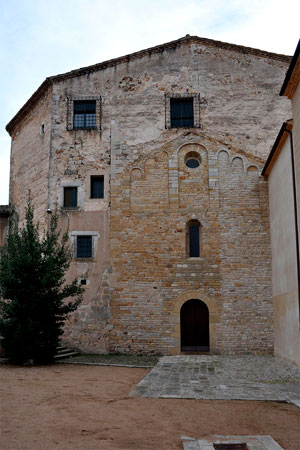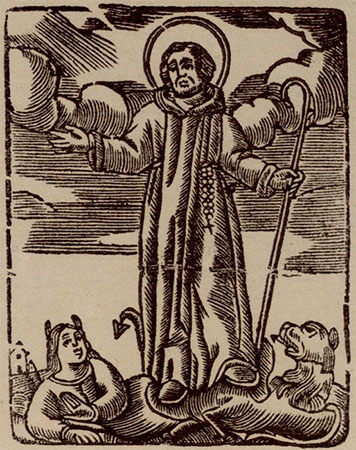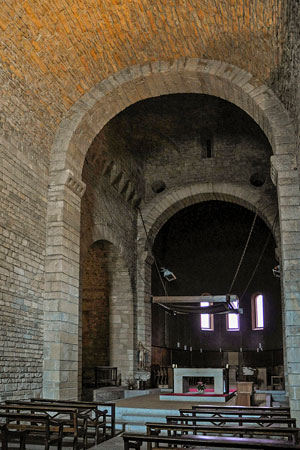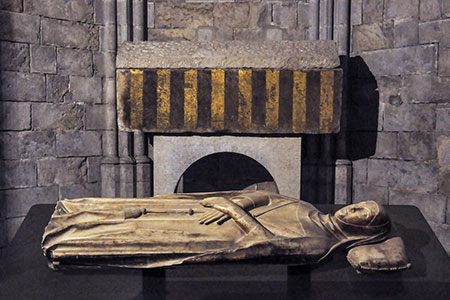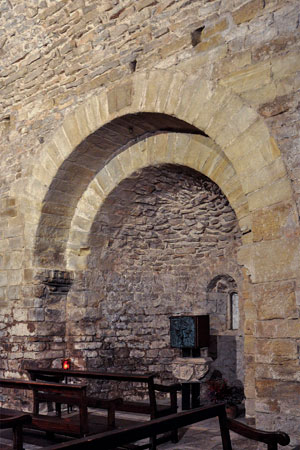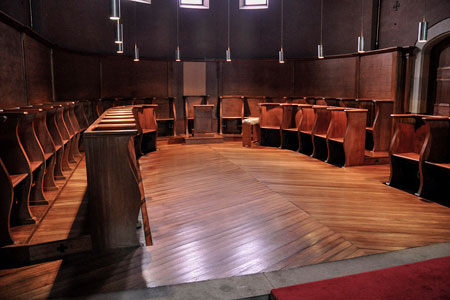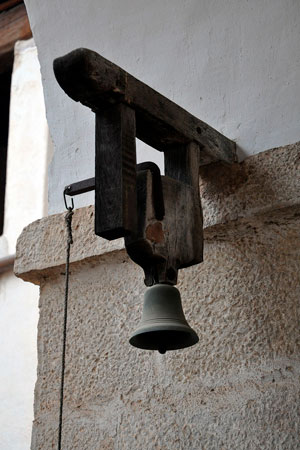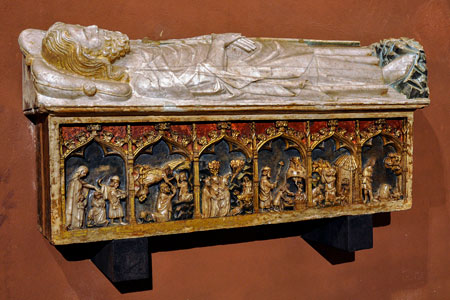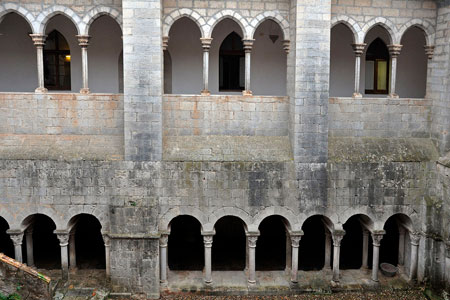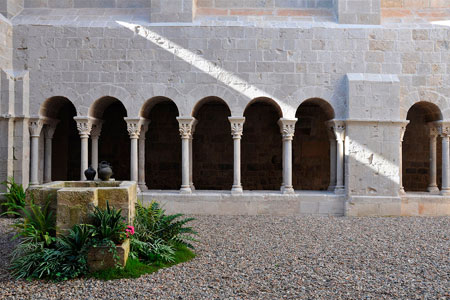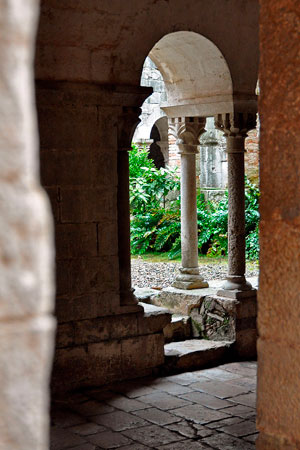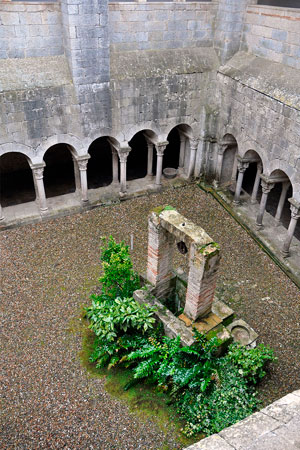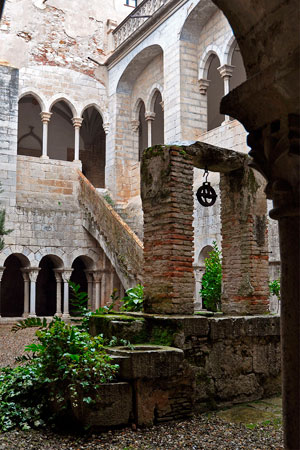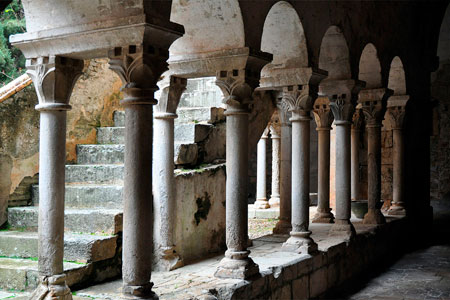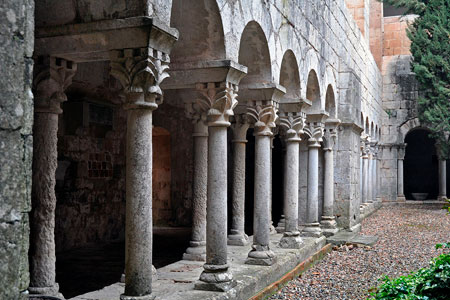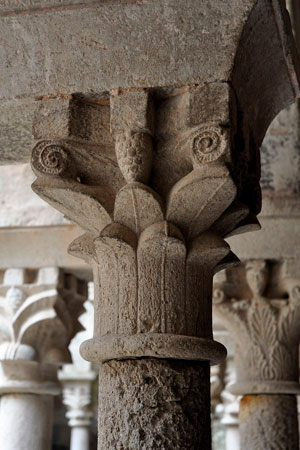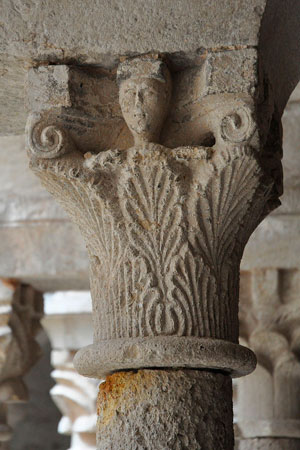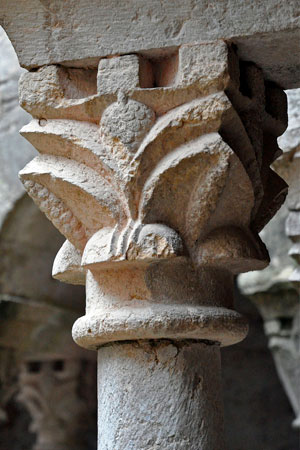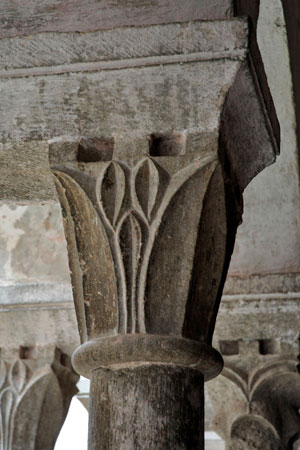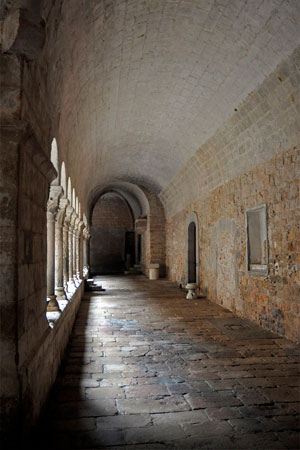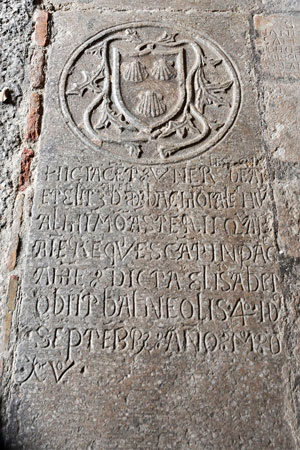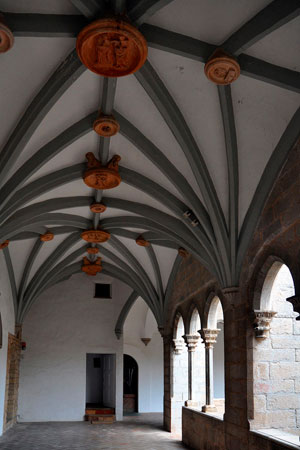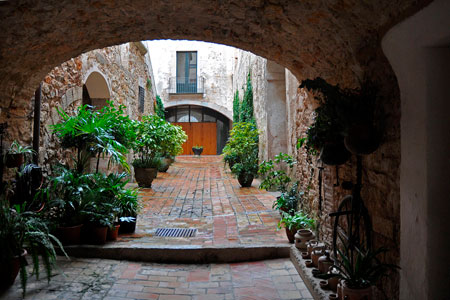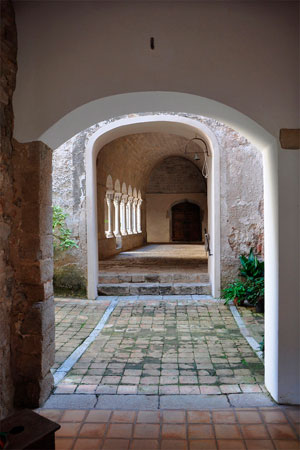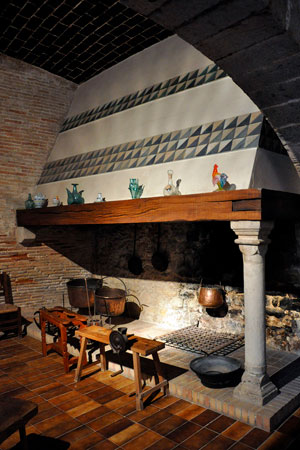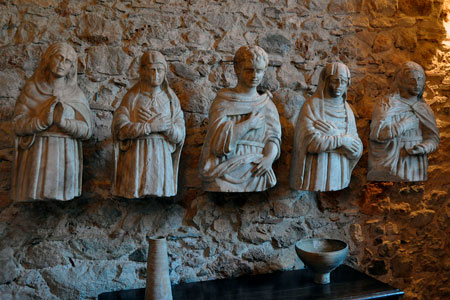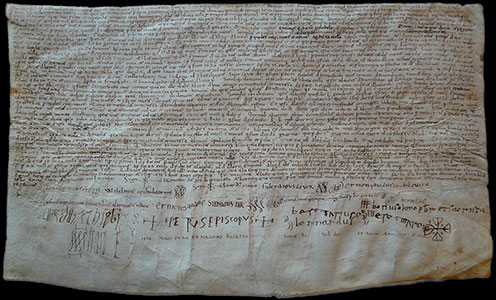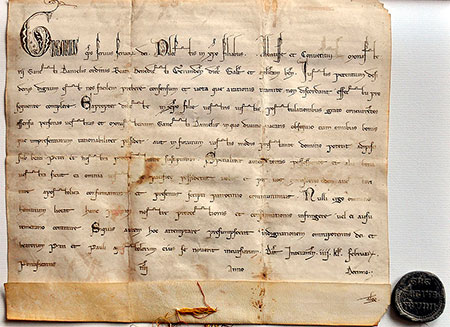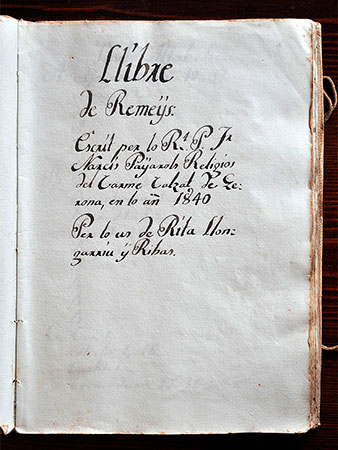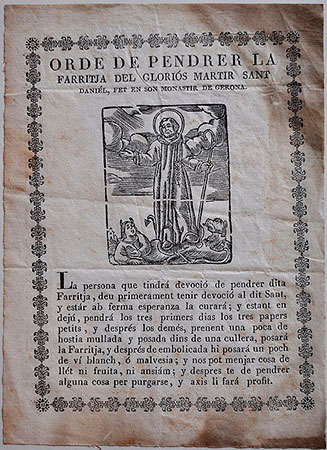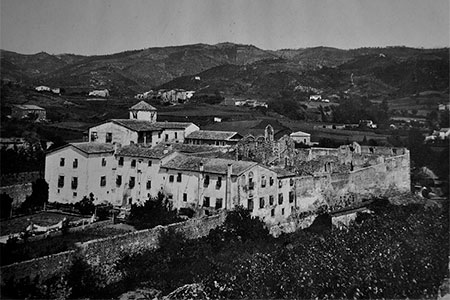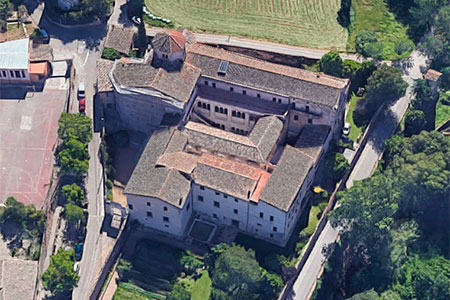The monastery of Sant Daniel has a history of more than a thousand years, having been in the same place up to the present day, has only been abandoned temporarily on a few occasions. Its establishment began in 1015, when the count of Barcelona, Girona and Osona, Ramon Borrell (972-1017) and his wife, Ermessenda de Carcassonne (c975-1058), acquired the parish of Sant Daniel from the bishopric of Girona, governed at that time by the bishop Pere Roger de Carcassonne, brother of the countess.
At that time, the bishopric was in financial difficulties and had to face important works in the cathedral (the construction of the Romanesque church that would be consecrated in 1038). The sale was to help the bishopric financially, which had probably owned the site of Sant Daniel since the end of the 9th or beginning of the 10th century, that is, since the arrival of the relics of the titular saint. On 15 March 1018, Countess Ermessenda, already the widow of Count Ramon Borrell, and her son Berenguer Ramon I (c. 1006-1035) formalised the donation of the church of Sant Daniel and all its goods and rights to the monastery of the same name.
Saint Daniel, hermit and martyr
Traditionally, Saint Daniel is considered to have been a hermit of Armenian origin who, after a period of retreat near Jerusalem, moved to Provence with the intention of evangelising that territory, which was then in the hands of Islam. There, he was persecuted by his adversaries and died a martyr's death in 888. His followers took charge of his body, which was transferred to the south, and in the same year they buried in a cave in a place later known as Vall de Sant Daniel. Soon his veneration began, and this led to the construction of a church that would later become the parish of Sant Salvador (although some versions tell us that the parish had already existed before) and would later be known as Sant Daniel.
The purchase of the parish of Sant Daniel was probably made with the foundation of the Benedictine monastery in mind, but it is not until the donation of 1018 that the monastic house is mentioned, so we must place the foundation process between 1015 and 1018. It should be noted that this donation included other goods, which were to facilitate the upkeep of the new monastic house. There is no mention of the existence of any community at that time, only a reference to the construction of the church. In 1028, the monastery of Sant Daniel and its abbess, Bonafilla, are mentioned for the first time. In 1086, the church that Ermessenda had begun, and which had been completed thanks to the support and protection of Countess Mafalda, the wife of Ramon Berenguer II, was consecrated.
Ermessenda of Carcassonne
Countess of Barcelona, Girona and Osona (c975-1058)
Daughter of Roger I of Carcassonne, wife of Ramon Borrell I of Barcelona, after his death (1017) she was regent of his son Berenguer Ramon I until 1023. In 1035, when he died, she was regent of her grandson Ramon Berenguer I until 1039. She had a very active political life and was in contact with the great personalities of her time. As a countess, she also took part in numerous religious events.
At that time the monastery accumulated an important patrimony, which was indispensable to guarantee its subsistence. This situation of prosperity was prolonged over time, in large part thanks to donations and privileges in its favour, many of them made by the families of the nuns who professed, one of the rules of the community established that they had to be daughters of the nobility. In 1343 the mortal remains of saint Daniel was found, and with the aim of revitalising the cult of his relics, in 1345 the Master Aloi was commissioned to build a sepulchre, which was placed in the crypt.
The monastery of Sant Daniel annexed other smaller monasteries, which were in decline, and which were thus incorporated into the monastery with their possessions. In 1458, the community of Santa Margarida de Prats de Roses, which had been founded in 1226 and moved to Castelló d'Empúries in 1389, was incorporated. A similar case was that of the monastery of Santa Maria del Mar (Calonge, Baix Empordà), documented since 1238; in 1423 it had only one nun and Pope Eugene IV suppressed it, turning it into a priory of Sant Daniel. In 1543, the prioress of the Cistercian monastery of Valdemaria (Maçanet de la Selva, Selva), citing problems arising from its isolation and insecurity, moved to Sant Daniel and in 1550 the monastery was fully integrated into it.
The Council of Trent gave rise to a wave of reform that affected the monastic world, especially the women's houses and their enclosure. From 1578 onwards, the internal rules of the house were modified in accordance with the new situation. Until then, the nuns had lived in the monastery with certain comforts, such as having private rooms and servants, but from that time onwards the conditions became stricter and, among other modifications, obliged the nuns to maintain community life and take measures regarding enclosure.
Over the years, warlike confrontations caused many troubles to the city of Girona and the monastery was not spared, with the Reapers' War the monastic centre was assaulted, and the nuns were forced to abandon it (1640). On the other hand, the different confrontations still caused a series of troubles to the Girona monastery, in 1681, 1684, 1710 and again at the end of the century, in 1795. In 1808 they encountered the Peninsular War and had to leave the monastery again, which was stormed and sacked. After an attempt to unite it with Sant Antoni and Santa Clara in Barcelona, they were able to return to Sant Daniel in 1819. The effects of the 1835 exclaustration were slight compared to the disastrous results elsewhere.
In 1881 and from this monastery of Sant Daniel, the new establishment of Sant Benet de Mataró was founded, which in 1952 merged with that of Sant Antoni i Santa Clara in Barcelona to form the new community of Sant Benet de Montserrat (Bages) where it maintains its activity. In 1936 the community left the monastery again because of the Spanish Civil War. The tomb of Saint Daniel was moved to the Museum of Girona and did not return until the end of the war in 1939, along with the nuns.
The church of the monastery of Sant Daniel is basically the one built by Countess Ermessenda (1018-1086), with older elements and with the logical mark of time, reforms, damage and restorations. It is a building with a single nave and transept, and currently only one of the original apses has been preserved; it is worth mentioning the dome in the middle of the building. The cloister is a beautiful example of Romanesque architecture, dating from the end of the 12th century. In the Gothic period, between 1427 and 1430, a superior floor was built, with two galleries, which was later completed with another two galleries, with large semicircular arches.
- ARAN I SURIOL, Joan (2002). Santa Anna de Barcelona. Barcelona: Ed. Mediterrània
- BRUGUÉS, Irene (2017). Producció i gestió documental d'un monestir femení. Tesi doctoral. Universitat de Barcelona
- CANAL, Fr. José de la (1832). España Sagrada. Vol 45. Madrid: Imp. José del Collado
- CARRERA, Jordi S. (2013). Capitells. Monestir de Sant Daniel. Diputació de Girona
- CONEJO DA PENA, Antoni (2003). Els darrers claustres monàstics gòtics. L’art gòtic a Catalunya. Arquitectura II. Barcelona: Enciclopèdia Catalana
- DOMÈNEC, Antoni Vicenç (1602). Historia general de los santos, y varones illustres en santidad. Barcelona: Graells
- FREIXAS CAMPS, Pere (1981). El monestir de Sant Daniel. Reformes i ampliacions gòtiques. Estudi General, núm. 1
- GAVÍN, Josep M. (1982). Inventari d'esglésies. Vol. 10. Gironès, Selva. Barcelona: Arxiu Gavín
- GIRONELLA, Anna (2010). El monestir de Sant Daniel. Mil anys de vida a la Vall. Ajuntament de Girona
- MALLORQUÍ, Elvis; SIERRA, Eduard (2011). La imposició de la clausura al Monestir de Sant Daniel de Girona, 1300-1370. Annals de l’Institut d’Estudis Gironins, vol. 52
- MARQUÈS, Josep M. (1981). El sepulcre de Sant Daniel, del mestre Aloy. Revista de Girona, núm. 96
- MARQUÈS, Josep M. (1996). Set cenobis femenins de l’Empordà. Estudis del Baix Empordà. Vol. 15. Sant Feliu de Guíxols: Institut d’Estudis del Baix Empordà
- MARQUÈS, Josep M. (1997). Col·lecció diplomàtica de Sant Daniel de Girona (924-1300). Barcelona: Fundació Noguera
- MORENO, Anabel (2014). Sant Daniel de Girona: Relectura del monestir romànic. Annals de l’Institut d’Estudis Gironins, vol. 55
- ROIG I JALPÍ, Joan Gaspar (1678). Resumen historial de las grandezas y antiguedades de la Ciudad de Gerona... Barcelona: J. Andreu
- SAMSÓ, Rosalia (2003). Vincles del Monestir de Santa Maria del Mar de Calonge amb el de Sant Daniel de Girona. Estudis del Baix Empordà, núm. 22
- VALERO, Joan (2016). Francesc Artau i el bust-reliquiari de Sant Daniel. Annals de l'Institut d'Estudis Gironins, Vol. LVII
- VIGUÉ, Jordi, PLADEVALL, Antoni, SANZ, Antoni (1991). Sant Daniel de Girona. Catalunya romànica. Vol. V El Gironès, la Selva, el Pla de l’Estany. Barcelona: Enciclopèdia Catalana
- VILA, Pep (2011). La ferritxa del gloriós màrtir Sant Daniel. Annals de l’Institut d’Estudis Gironins, vol. 52
- Link ↗ : Claustra
